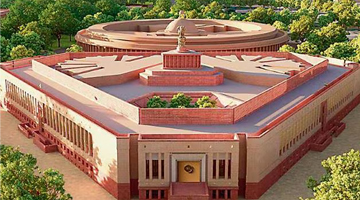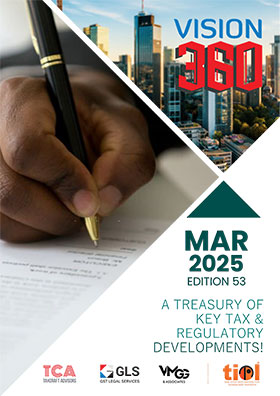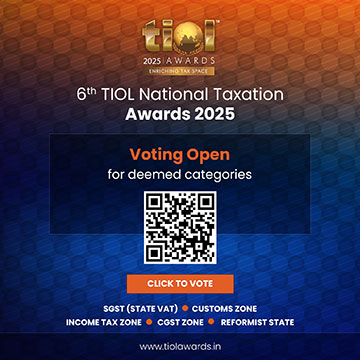Treading the GST Path-I - A 'Principal' mismatch?
AUGUST 25, 2016
By G Natarajan, Advocate, Swamy Associates
 IN this series of articles, the author proposes to deal with various provisions under the model GST law and highlight its impact, for the stakeholders' attention and the need for redressal by Government, if need be.
IN this series of articles, the author proposes to deal with various provisions under the model GST law and highlight its impact, for the stakeholders' attention and the need for redressal by Government, if need be.
Under the present Cenvat Credit Rules, 2004 (CCR, 2004), credit in respect of the goods and services used for construction came to be restricted from 01.04.2011. The definition of "inputs" and "input services", as per Rule 2 (k) and 2 (l) of the CCR, 2004 respectively, contains the following exclusion.
Input excludes, any goods used for -
(a) construction or execution of works contract of a building or a civil structure or a part thereof; or
(b) laying of foundation or making of structures for support of capital goods,
except for the provision of service portion in the execution of a works contract or construction service as listed under clause (b) of section 66E of the Act
Input service excludes,
service portion in the execution of a works contract and construction services including service listed under clause (b) of section 66E of the Finance Act (hereinafter referred as specified services) in so far as they are used for -
(a) construction or execution of works contract of a building or a civil structure or a part thereof; or
(b) laying of foundation or making of structures for support of capital goods,
except for the provision of one or more of the specified services;
It may be observed from the above that cenvat credit of specified duties paid on goods like cement, steel, etc. and service tax paid by a service provider engaged in construction activities is not entitled for the end user, i.e a manufacturer or service provider. But the exclusion would not apply for those who provide such construction services.
The effect of the above exclusions, are:
(i) A contractor who is carrying out construction work for his customer, is entitled to avail cenvat credit of the specified duties paid on his inputs, subject to various other relevant provisions. For example while paying service tax on a value determined under any one of the methods under Rule 2 A of the Service Tax (Determination of Value) Rules, 2006, no cenvat credit of duties paid on inputs is allowed. But, if at all he opts to pay service tax on the whole value, there are no restrictions on availing cenvat credit of the duties paid on his inputs, under CCR, 2004. (S.V. Jiwani Vs CCE&ST – 2014-TIOL-559-CESTAT-AHM).
(ii) If a contractor who is carrying out construction work for his customer, has sub contracted the work to a sub contractor, the service tax charged by the sub contractor can be availed as cenvat credit by the (main) contractor and there are no restrictions in this regard.
(iii) If a manufacturer or any other service provider, constructs a building for his activity of manufacture / provision of output service, in no case, they are entitled for credit of the duties paid on inputs (cement, steel, etc.) or the service tax paid on the construction services, by the contractor.
It is hoped that there is no deviation from the above principle under the GST regime also, though it would have been a welcome measure if all such restrictions are removed. Assuming that the same position is sought to be continued under the GST regime also, let us see, how the relevant provisions are worded in the model Act.
The issues relating to input tax credit are contained, inter alia, in Section 16 of the model Act. The following exclusion has been provided for in sub section (9) thereunder, which inter alia contains the following.
(9) Notwithstanding anything contained in sub-section (1), (2), (2A) or (3) input tax credit shall not be available in respect of the following:
(c) goods and/or services acquired by the principal in the execution of works contract when such contract results in construction of immovable property, other than plant and machinery;
(d) goods acquired by a principal, the property in which is not transferred (whether as goods or in some other form) to any other person, which are used in the construction of immovable property, other than plant and machinery;
As the above provision uses the term "principal" let us refer to the definition of the said term under Section 2 (77) of the Act according to which,
"principal means a person on whose behalf an agent carries on the business of supply or receipt of goods / services".
The term "agent" is also defined in Section 2 (5) as
"agent" means a person who carries on the business of supply or receipt of goods and/or services on behalf of another, whether disclosed or not and includes a factor, broker, commission agent, arhatia, del credere agent, intermediary or an auctioneer or any other mercantile agent, by whatever name called, and whether of the same description as hereinbefore mentioned or not;
Use of the word "principal" in Section 9 (3) (c) and 9 (3) (d) above leads to a confusion and does not portray the intention behind these provisions clearly.
If we interpret the term "principal" as per the definition of the term, the exclusion has very limited application. At the same time, as a sub contractor may satisfy the definition of "agent" and the main contractor may satisfy the definition of "principal" and hence availment of credit of GST paid by the sub contractor by the main contractor may be affected by this provision, which could not have been the intention. There is no way the term "principal" can be interpreted to mean only an end user, other than the person providing similar construction services, as it was the case with the existing provisions. If we interpret the term merely as a "taxable person" then also credit availment by the main contractor would be in jeopardy.
So in order to portray the legislative intention clearly, causes (c) and (d) of sub section (9) of Section 16 of the model GST law needs proper redrafting, when it becomes the law.
Part - II
|
(DISCLAIMER : The views expressed are strictly of the author and Taxindiaonline.com doesn't necessarily subscribe to the same. Taxindiaonline.com Pvt. Ltd. is not responsible or liable for any loss or damage caused to anyone due to any interpretation, error, omission in the articles being hosted on the sites)
|









 IN this series of articles, the author proposes to deal with various provisions under the model GST law and highlight its impact, for the stakeholders' attention and the need for redressal by Government, if need be.
IN this series of articles, the author proposes to deal with various provisions under the model GST law and highlight its impact, for the stakeholders' attention and the need for redressal by Government, if need be. 





